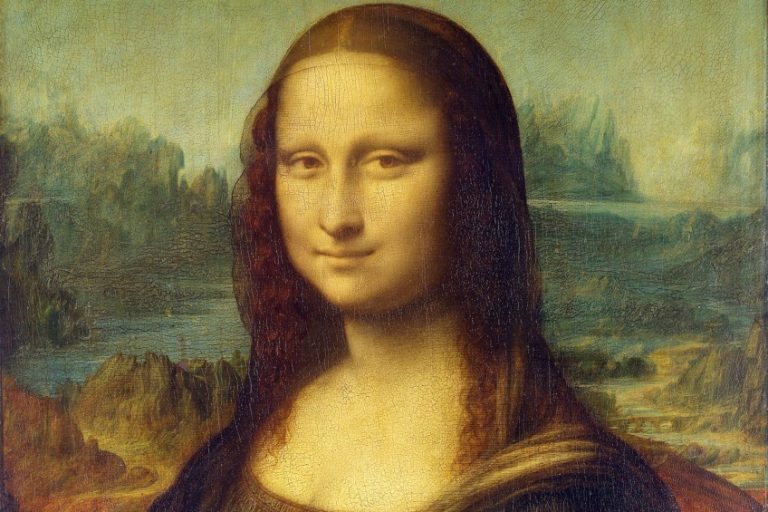“Ascending and Descending” by Maurits Cornelis Escher
Ascending and Descending, created by the renowned Dutch graphic artist Maurits Cornelis Escher in 1960, is a masterful illustration that epitomizes his fascination with paradoxes and the impossible. This lithograph features an endless loop of figures perpetually climbing and descending a never-ending staircase, an architectural illusion that defies logical spatial understanding. Escher, celebrated for his intricate and mathematically inspired works, uses this piece to challenge the viewer’s perception of reality, drawing inspiration from the Penrose stairs, an impossible object devised by Lionel and Roger Penrose. Through meticulous detail and clever manipulation of perspective, Escher invites viewers to explore the boundaries of visual perception and the captivating complexity of the infinite.
Key Takeaways
- Ascending and Descending is a 1960 lithograph by M.C. Escher.
- The artwork features an endless staircase, creating an optical illusion.
- Escher’s work blends art with mathematical concepts, challenging perception.
Historical Context
| Artist | Maurits Cornelis Escher (1898 – 1972) |
|---|---|
| Date Created | 1960 |
| Medium | Print (lithograph) |
| Genre | Surrealism |
| Period/Movement | Modern Art |
| Dimensions (cm) | 35.5 x 28.5 |
| Series/Versions | N/A |
| Where Is It Housed? | N/A (privately owned) |
| What It Is Worth | Estimated value varies widely; often considered priceless |
Maurits Cornelis Escher, commonly known as M.C. Escher, remains one of the most intriguing figures in the world of graphic art. His 1960 lithograph, Ascending and Descending, is a testament to his fascination with mathematical concepts and impossible constructions. This artwork depicts a seemingly endless staircase, capturing the viewer’s attention with its paradoxical nature. Ascending and Descending showcases Escher’s unique ability to blend art with geometry, creating visual puzzles that challenge perception.

The lithograph portrays figures endlessly climbing and descending a staircase, an optical illusion that defies the laws of physics. This piece is a part of Escher’s broader exploration of impossible realities and plays a significant role in his legacy. Escher’s meticulous attention to detail and innovative approach have cemented Ascending and Descending as a crucial work in his repertoire. Collectors and art enthusiasts value this lithograph not only for its aesthetic appeal but also for its ability to provoke thought and discussion.
Reception
Upon its release, Ascending and Descending garnered significant attention due to its innovative approach to visual paradoxes. The lithograph’s depiction of a never-ending staircase captivated both the art community and the general public.
Escher’s partnership with Roger Penrose, a British mathematician, exposed him to ideas that deeply influenced the artwork, contributing significantly to its fascination and widespread appeal.
The reception wasn’t limited to art enthusiasts; mathematicians and scientists also praised the work for its complex interplay between art and mathematics. This widespread acclaim helped cement Escher’s reputation as one of the leading figures in the field of graphic arts.
M.C. Escher’s Body of Work
Escher’s Ascending and Descending fits seamlessly within his broader portfolio, which includes other renowned works like Drawing Hands, Waterfall, and Reptiles. Each of these pieces showcases his mastery in creating optical illusions and exploring impossible geometries.

His technique involved painstakingly detailed woodcuts and lithographs, underscoring his commitment to precision. The Dutch artist’s fascination with the infinite and the impossible is evident throughout his career, with Ascending and Descending standing as a quintessential example of his thematic and stylistic pursuits.
The lithograph not only showcases his artistic skills but also highlights his ability to infuse his work with mathematical and philosophical depth.
Creation and Concept
M.C. Escher’s Ascending and Descending, created in 1960, is a masterpiece of visual paradox and mathematical intrigue. It showcases his distinct artistic style focused on impossible constructions, infinite loops, and optical illusions.
Artistic Influence
British mathematician Roger Penrose exerted a profound influence on Maurits Cornelis Escher. The concept of a never-ending staircase featured in Ascending and Descending was inspired by Penrose’s research on impossible objects. Their collaboration allowed Escher to explore mathematical impossibilities through art. The lithograph’s inspiration can be traced to Penrose’s impossible triangle, leading to Escher’s fascination with creating artwork that defied logic and traditional perspective. The influence of Renaissance art and Italian landscapes also played a role in shaping Escher’s unique visual language.

Symbolism and Themes
Ascending and Descending symbolizes the futile and endless nature of repetitive tasks. The image features identically dressed figures perpetually climbing or descending a staircase without reaching any destination. This evokes philosophical reflections on the human condition, societal structures, and the concept of infinity. The recurring themes of symmetry and reflection present in the work highlight Escher’s interest in exploring mathematical and visual paradoxes.
The architecture within the piece further enhances the sense of illusion and enigma, creating a contemplative and thought-provoking image.
Technique and Medium
Escher employed the lithographic technique to create Ascending and Descending. Lithography allowed him to achieve the precise and meticulous lines characteristic of his work. The dimensions of the print are 35.5 cm by 28.5 cm, making it a relatively compact yet powerful piece. The technical prowess demonstrated in the use of shading, perspective, and geometry adds depth and complexity to the optical illusion. The effective use of black, white, and grey tones highlights the intricate details and symmetry in the staircase, bringing the impossible construction to life. This method not only served as a medium but also as a fundamental component in Escher’s exploration of visual paradoxes.

Visual Analysis
Ascending and Descending by M.C. Escher is renowned for its intricate design and thought-provoking elements, including its impossible staircase, architectural features, and masterful use of perspective. Let’s look more closely at these aspects to understand the complexities of this graphic work.
The Infinite Staircase
Escher’s lithograph features a paradoxical structure known as an “impossible staircase.” The staircase is designed to create a never-ending loop where figures appear to ascend and descend continuously without ever reaching a higher or lower point.
This illusion plays with the viewer’s sense of reality, challenging perceptions of space and direction. Escher’s meticulous attention to detail ensures that the staircase appears to be a coherent, viable structure at first glance, drawing the viewer into its enigmatic nature.
Architectural Elements
The large building that houses the infinite staircase showcases Escher’s skill in depicting architectural elements with precise lines and spatial relationships. The building itself has a fortress-like appearance, with turrets and parapets adding to the sense of a grand, imposing edifice. Every part of the structure is carefully rendered to enhance the illusion of depth and three-dimensionality.
The figures on the stairs are dressed identically, reinforcing the visual harmony and emphasizing the endless cycle of ascent and descent.
Use of Perspective
Escher’s use of perspective in Ascending and Descending is crucial in creating the overall effect of the lithograph. He employs skewed viewpoints and clever vanishing points to make the impossible staircase appear logical when viewed from certain angles. This manipulation of perspective tricks the brain into accepting the impossible as possible.

Additionally, elements such as the architectural details and the figures’ positioning on the stairs are aligned in ways that guide the observer’s eye smoothly through the composition, maintaining the optical illusion’s seamlessness. This masterful use of perspective cements Escher’s reputation as a genius of visual deception.
This analysis of the infinite staircase, architectural elements, and perspective highlights the ingenuity behind Escher’s Ascending and Descending, making it a timeless piece of graphic art.
Collection and Legacy
Escher’s Ascending and Descending has found its place in prominent collections and continues to influence modern art. The meticulous conservation of Escher’s lithographs ensures their longevity and availability for future generations.
Notable Collections
Escher’s Ascending and Descending lithographs are housed in several prestigious collections and museums globally. They are often part of numbered and signed editions, ensuring authenticity and value. For instance, prints like No. 93/108 and No. 49/50 II are renowned for their scarcity and quality. Museums such as the Escher in Het Paleis in The Hague and the National Gallery of Art in Washington, D.C., proudly display these works, allowing public access to Escher’s intricate designs.

Impact on Modern Art
Escher’s work, including Ascending and Descending, has profoundly influenced contemporary artists and thinkers. His use of impossible structures and mathematical precision has inspired fields beyond the visual arts, including architecture and graphic design. Artists like Penrose, known for the Penrose stair, drew directly from Escher’s concepts.
The lithograph continues to inspire discussions and exhibitions centered on visual paradoxes and the limits of perception in art.
Conservation and Preservation
Preserving Escher’s lithographs involves meticulous care. The lithographs, often printed on wove paper with wide margins and watermarked with “Holland,” require careful handling to prevent pale light-staining and other forms of deterioration. Conservation specialists ensure these works are framed under controlled conditions to maintain their condition. The rigorous cataloging of prints, noting details such as being “signed in pencil” and “numbered,” is crucial for maintaining their historical and monetary value. Auction houses like Christie’s play a significant role in curating and auctioning these important pieces, ensuring their legacy endures.
Ascending and Descending stands as a testament to Maurits Cornelis Escher’s unparalleled ability to blend art, mathematics, and optical illusion. This iconic lithograph not only exemplifies Escher’s technical prowess but also his profound exploration of the limits of human perception. By creating an impossible architecture that entraps its figures in a perpetual loop, Escher invites viewers to reflect on the nature of reality and the boundaries of logical space. His work continues to captivate and inspire, offering a timeless reminder of the fascinating interplay between art and the infinite complexities of the human mind.
Frequently Asked Questions
How Does Ascending and Descending Exemplify the Concept of an Impossible Object?
Ascending and Descending features a never-ending staircase, causing viewers to question the possibility of such a structure in real life. This depiction aligns with the idea of an impossible object, as the continuous loop of stairs ascending and descending defies logical construction.
In What Way Is Ascending and Descending a Reflection of Escher’s Interest in Infinity?
Escher’s interest in infinity is evident in the endless staircase, which appears to go on forever without reaching a definitive start or end. This visual representation captures the artist’s fascination with infinite loops and the idea of a perpetually ongoing process.
What Printmaking Technique Did M.C. Escher Employ to Create Ascending and Descending?
Escher used lithography to create Ascending and Descending. This printmaking technique involves drawing on a stone or metal plate with a greasy substance. The meticulous execution allowed for the detailed precision necessary to portray the intricate, impossible staircase.
Can Ascending and Descending Be Considered a Type of Visual Paradox?
Ascending and Descending can indeed be considered a visual paradox. The artwork displays a structure that logically cannot exist in the real world. The impossible staircase challenges the viewer’s understanding of perspective and spatial relationships, creating a compelling visual and cognitive contradiction.
Isabella studied at the University of Cape Town in South Africa and graduated with a Bachelor of Arts majoring in English Literature & Language and Psychology. Throughout her undergraduate years, she took Art History as an additional subject and absolutely loved it. Building on from her art history knowledge that began in high school, art has always been a particular area of fascination for her. From learning about artworks previously unknown to her, or sharpening her existing understanding of specific works, the ability to continue learning within this interesting sphere excites her greatly.
Her focal points of interest in art history encompass profiling specific artists and art movements, as it is these areas where she is able to really dig deep into the rich narrative of the art world. Additionally, she particularly enjoys exploring the different artistic styles of the 20th century, as well as the important impact that female artists have had on the development of art history.
Learn more about Isabella Meyer and the Art in Context Team.
Cite this Article
Isabella, Meyer, ““Ascending and Descending” by Maurits Cornelis Escher.” Art in Context. July 16, 2024. URL: https://artincontext.org/ascending-and-descending-by-maurits-cornelis-escher/
Meyer, I. (2024, 16 July). “Ascending and Descending” by Maurits Cornelis Escher. Art in Context. https://artincontext.org/ascending-and-descending-by-maurits-cornelis-escher/
Meyer, Isabella. ““Ascending and Descending” by Maurits Cornelis Escher.” Art in Context, July 16, 2024. https://artincontext.org/ascending-and-descending-by-maurits-cornelis-escher/.











